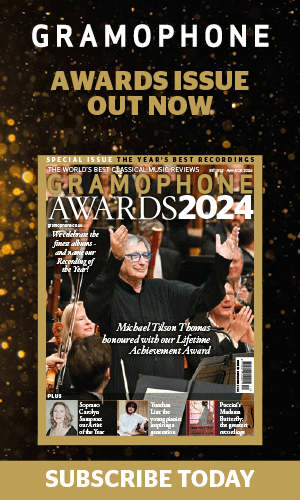Callas via Legge
Gramophone
Wednesday, March 14, 2012
In 1971 I recorded a series of interviews with Walter Legge at his home near Geneva. He spoke without notes and I have not changed anything.
Legge worked for The Gramophone Co. (EMI) from 1927 until 1964 and was responsible for conceiving and supervising recordings by many artists, including Callas, Karajan, Klemperer and Schwarzkopf (to whom he was married):
‘I never found Callas a bad colleague; she never hogged the microphone when recording. She listened to what other people did. I found her at work one of the most amenable people I have ever known; in all the 12 years we worked together we never had one cross word. She said to me one day: “You know, when we have our quarrel, it’s going to be hell, because you know how to hurt me and I know how to hurt you.” I said to her, “Maria, there is no need for us to quarrel – why should we ever quarrel?” She added, “People of our strength of will and personality always quarrel eventually”.’
And did you? ‘We didn’t quarrel; but when I resigned from EMI I told her and she wrote a letter to the board of the company saying she wished to have nothing more to do with me. And I didn’t hear from her until two years ago when she heard I had been ill and rang up in the friendliest, kindest way. as if there had been no silence between us, and invited me to work with her in New York in the Juilliard School where she teaches style from Rossini to Verdi [At the invitation of Peter Mennin, then President of the Juilliard School of Music, Callas gave two series of masterclasses in ‘The Lyric Tradition’ as a guest faculty member of the school, in 1971.] She said, “After all, we are the only two people who really understand this so it’s our duty to do it.” But, after all, with my wife, who was another soprano, singing at La Scala, usually at the same period as Callas, she was friendliness itself – there was never an angry word – they even recorded Turandot together. Of course, Turandot and Liu have virtually nothing to do with each other but even on the telephone a couple of weeks ago, she said: “Give my love to Elisabeth – of all my colleagues she’s the one dearest to me, the one I admire most”.
‘Once she had difficulties with a certain tenor with whom she sang a lot and he got a little jealous of Callas getting more calls than he did. I thought I had found a marvellous couple – a sort of Caruso/Melba pair. However, this tenor or his wife found out that Callas, like my wife, is allergic to the smell of garlic because they both get a surplus of saliva in the mouth with any smell of garlic; so this tenor’s wife started standing in the wings and before every love duet or every embrace, the tenor walked to the wings, stretched out a hand, took one or two pieces of garlic, shoved them in his mouth, chewed them and then embraced Callas, who could not get rid of the surplus saliva that she had got in her mouth. And that finished possibly one of the greatest operatic associations of our time.’ Just like sucking a lemon in front of a brass band!
‘One of the things that very few people understand about Callas, particularly her detractors, is that although she has been preoccupied all her career with bel canto – that is singing beautifully – she is one of the few artists in my memory who quite deliberately would produce significant sounds of a particular dramatic intensity or meaning on a syllable or even on a single consonant – sometimes over a long phrase to convey dramatic meaning. She herself has often said: “Some of the texts we have to sing are not distinguished poetry but it’s a matter only of indifference to me, I know that to convey the dramatic effect to the audience and to myself I must sometimes produce sounds that are not beautiful; I don’t mind if they are ugly as long as they are true.”
‘Callas has an absolute contempt for merely beautiful singing. Fioriture and those things of elegance and school and style – these must be done with the maximum of beauty of sound and professional execution; but for dramatic effect, she will go for a brutally ugly sound to make that dramatic impact that she wants. When I first heard Callas she often produced certain sounds that I used to described as “singing into a bottle” and it was not until we got to know each other and went to throat specialists together that I started looking into her mouth and throat; to my astonishment I saw that she has an upper palette of almost Gothic shape – instead of Romanesque – unlike any other mouth I have ever seen. It goes up like a church steeple and no doubt some of those curious covered, sometimes slightly rough sounds, come from that peculiar structure of her mouth. The shape of the resonances, the shape of the mouth, the shape of the cords, are those factors which make the character of the voice. I am afraid that Callas may harm a generation of singers because people, young singers, try to imitate not all her virtues but some of the other things which she does deliberately and can do because of her intelligence and her quest for dramatic purpose. They try to produce sounds like hers which are not beautiful but they do not know why they are producing unbeautiful sounds, they merely think they are just doing a home-made Callas.
‘Several of the greatest singers of our time, or rather of an earlier generation, have been the ruin of singers of later generations. Think of all the tenors who tried to imitate Caruso! Think of two generations of Italian baritones who tried to produce Ruffo’s fantastic volume and his wonderful covered sounds at the top without having the physique for it. Ruffo’s head was unlike any other singer; he had a broad nose, no neck, and he never opened his mouth wide, but he produced fantastic sounds simply because of the built-in resonances. Callas has her own set of built-in resonances which produce this voice with so many fantastic colours.’
Don’t you think that she produces a better legato than any other singer today? ‘Of course, because she knows that a legato must be like a telephone wire, where you can see the line going through; the consonants are just perched on it like the feet of sparrows, and Callas uses the consonants with great effect, but basically the legato line is held so that you hear it all the time and are not aware of the interruption of the consonants except for their dramatic purpose.
‘One curious thing about Callas, and a most admirable quality, was that she was absolutely imperturbable; even the hisses in Parma did not disturb her equanimity. There was an extraordinary case of that sort in Milan. It was a habit of her fans to occupy the seats in the gallery nearest to the stage and when she took her curtain calls at the end of the opera, to shower her with small bouquets. The fans of a rival soprano – because she had a rival in one period at La Scala – decided they would disturb this, so they had bunches of radishes and carrots and other small vegetables; they got there earlier than the Callas fans, occupied the seats nearest the proscenium arch and instead of Callas getting her usual shower of bouquets, she got a shower of vegetables – and of course some bouquets from her own fans. She is very short-sighted and she walked down, picked up each of these offerings from the floor, sniffed them: the vegetables were dropped into the orchestra and the flowers were handed to colleagues. One of the supreme examples of absolute sovereignty on the stage and quickness of thinking.’ Italian audiences do not seem to have changed much in the last 2,000 years!
By John Amis
Back to Maria Callas / Back to Hall of Fame









